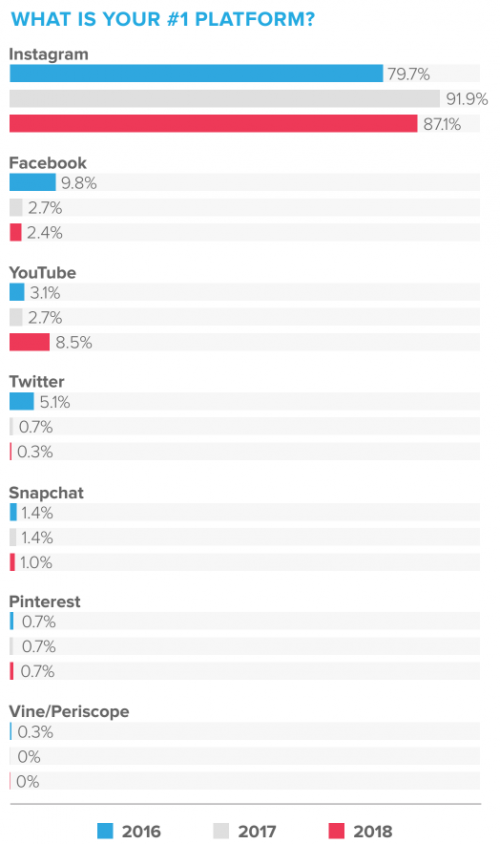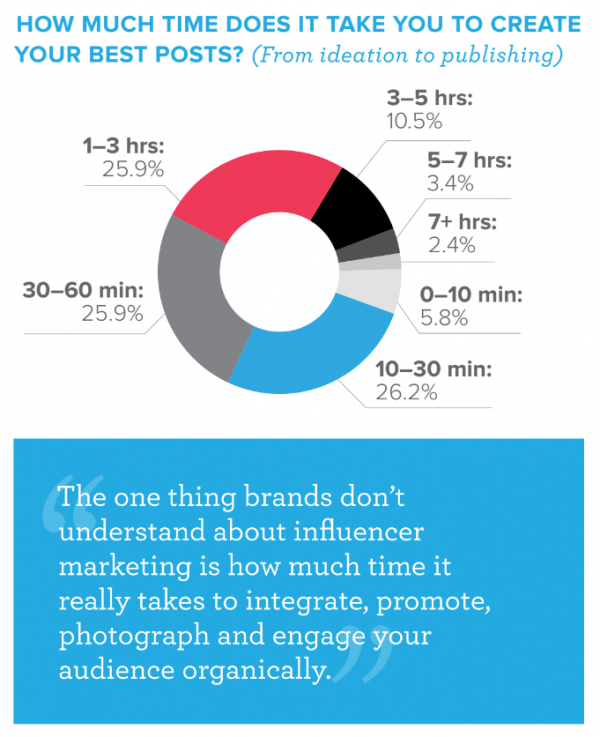They blog from the first row at catwalks. They share cool design gadgets on Instagram. They strike a pose with a selfie in front of 5-star hotels on Pinterest. And, they record „Let’s plays“ for Youtube while testing the latest computer games. The one thing they have in common? They are online influencers. A digital species that challenges and changes the marketing world of models, testimonials and the publishing industry.
According to an annual Nielsen study, it is a common knowledge that people trust most in recommendations of people they know. In the past, marketers put models or celebrities in this „recommendation seat“. It was meant to address two benefits: Brands intended to grasp some of the consumers’ attention by trying to hitch-hike on the wave of VIP awareness and public relevance. And, they used the reach of magazines and the trust those public voices had for the people.

It seems to me that the tables are turning now, and marketers have to rethink their brand extension strategy.
1. Models – the personalization dilemma
When using models, brands couldn’t tell exactly which audience they were addressing. It was a marketers’ and model agent’s best guess which model fits which brand. However, a model does not have a transparent target-group. They are just faces without any open address books or lead list.
Social influencers are their own agents. Their content markets their personality, their personality defines their content, their reach expresses their quality. They have got fans, followers, and friends that everybody (not only when following them) can see. A clear defined and dynamic target-group that is commited to them and engages with them on a regular basis. What they say gets read. What they state is trusted. In fact, their consumer opinion becomes one of the most trusted sources that people believe in – more than traditional ads of any kind.
Just imagine the influence on purchase intent, when an influencer is posting online to a large audience of friends and fans. Social influencers are perceived of their active and growing audiences as “more real” than models, somehow even as “friends”.
But also the traditional model business is affected by the upcoming influencer trend: Previously interchangeable and relatively anonymous faces are now increasingly becoming personal brands thanks to their personalized Instagram and Snapchat channels and/or (mostly fashion- and beauty related) blogposts. Consequently, numerous models with significant reach are also acting as influencers to their audiences.
2. Testimonials – the authenticity dilemma
Testimonials need to match brand authenticity and follow the brand message in order to become valuable for marketers. Serious investment in dollars does not allow a testimonial’s mistake. Contracts are long-term and include testimonial involvement not only in all brand campaigns but also in personal PR and marketing engagement during the contracting period.
Money counts for testimonials – as much as monetary rewards do for online influencers. This is definitely true for the fashion and beauty industry, states the “Fashion & Beauty Monitor” report in partnership with Econsultancy named “The Rise of Influencers“. However, three out of five surveyed influencers believe that the “relevance of brand in relation to own area of expertise “is essential when collaborating with marketers. Influencers are very well aware of their personality as brand that has to be secured and consequently, they do not sell everything just because they are asked to. Of course, this in return means a certain loss of control for marketers when working with powerful influencers. Just to state an example, years ago, I offered MINI a cool opportunity to collaborate with me. I fear the idea never reached the BMW four-cylinder tower – perhaps for fear of losing brand control?
Think about it: How authentic can testimonials be that are selected by brands as of their popularity in sports, fashion and lifestyle? Testimonials sell their media value. On the contrary, engagement with influencers can only work when brands do not act too commercial with them and meet their personal authenticity. Social influencers are personal brands; authentic brands that companies can collaborate with.
3. Publishers – the relevance dilemma
When content from influencers gets more attention (and is trusted more) than content from advertising, relevance becomes a critical tipping point. For years, marketers and PR experts were convinced that “serious” traditional publishers are more relevant to readers than bloggers or any other form of social media active people. Thus, they invested serious dollars in brand building activities with the publishing industry. Today, these very media houses are approaching influencers to increase their declining media value.
A recent study by Collective Bias shows that content from influencers is viewed for more than 2 minutes (which is 7 times longer than the digital display ad average with a view time of just 19.2 seconds). Plus the relevance of someone’s personal opinion -whether rating, recommendation or review- has become of high value for consumers. Now if content from an influencer is relevant and perceived as being “authentic” , publishing is facing serious competition in the future.
However, relevance needs to meet relevance both ways. Just putting brand messages into the mouth of online influencers won’t accelerate a brand’s value. In order to become relevant to an influencer and his or her audience, a brand needs to be “love-brand” in a social influencer’s mind. If not, the influencer will be perceived (and probably also act) like a traditional publishing product without a media-kit.
Solving the dilemma – budget and advertising strategy
The world of testimonials, models and publishing is changing with the rise of influencers.
More and more companies and brands start working with social influencers. I personally doubt that they will completely replace models, testimonials and publishing houses, but the future will tell. However, the world of recommendations will be redefined by a new species.

According to a recent #BrandofMe study, brands invested 1 Bio. USD in 2015 in influencer programs on Instagram only. Influencers earn between 500 and 10.000 USD per Instagram photo or Youtube video – obviously depending on their media reach. Which means that some influencers get paid as much as some publishers for their ad space. A lot of budget that moves away from traditional brand building worlds.
The question is what values more to brands in terms of business impact: tradition or progression. But that question can only be answered when brands understand the power that online influencers can have on and in the sharing economy.














